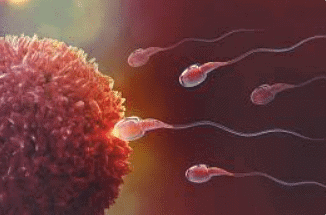Year 9 Exam > Year 9 Notes > Year 9 Biology (Cambridge) > Variation and inheritance
Variation and inheritance | Year 9 Biology (Cambridge) PDF Download
| Table of contents |

|
| Variation within a Species |

|
| Chromosomes, Genes, and DNA |

|
| Fertilisation and Inheritance |

|
| Fetal Growth and Development |

|
| Natural Selection |

|
Variation within a Species
- Definition: Variation refers to the differences in traits among individuals of the same species, influenced by both genetic inheritance and environmental factors.
- Causes of Variation:
- Genetic Factors: Differences in genes inherited from parents.
- Environmental Factors: External influences such as climate, diet, and habitat.
- Examples:
- Human height variations due to genetic diversity inherited from parents.
- Plant leaf color variations influenced by exposure to sunlight and soil nutrients.

Chromosomes, Genes, and DNA
- Chromosomes: Structures within cells that contain genetic information.
- Types of Chromosomes: Humans have 23 pairs, including sex chromosomes (XX for females, XY for males).
- Genes: Segments of DNA that determine specific traits.
- Alleles: Different forms of a gene (e.g., blue eyes allele vs. brown eyes allele).
- DNA (Deoxyribonucleic Acid): Double-helix molecule carrying genetic instructions.
- Function: Provides the genetic blueprint for all living organisms.
- Example: Inheritance of blood type (A, B, AB, O) determined by specific genes on chromosomes.
Question for Variation and inheritanceTry yourself: Which of the following factors can contribute to the variation in human height among individuals of the same species?View Solution
Fertilisation and Inheritance
- Fertilisation: Fusion of male gamete (sperm) with female gamete (egg) to form a zygote.
- Genetic Diversity: Each zygote inherits a unique combination of genes from both parents.
- Inheritance Patterns:
- Dominant and Recessive Traits: Dominant traits mask recessive traits in heterozygous individuals.
- Sex-Linked Traits: Traits determined by genes on sex chromosomes (e.g., color blindness on the X chromosome).

Fetal Growth and Development
- Stages of Development:
- Embryonic Stage: Formation of organs and major body systems.
- Fetal Stage: Growth and refinement of organs until birth.
- Factors Affecting Development:
- Genetic Influences: Inherited genetic predispositions and mutations.
- Environmental Influences: Maternal nutrition, exposure to toxins, and prenatal care.
- Example: Development of fetal brain structures influenced by both genetic predispositions and maternal health during pregnancy.
Natural Selection
- Definition: Process where organisms with advantageous traits survive and reproduce, leading to evolutionary change.
- Mechanisms:
- Adaptation: Traits that increase survival and reproductive success in specific environments.
- Selective Pressures: Environmental factors that favor certain traits over others.
- Examples:
- Darwin's finches evolving different beak shapes to exploit different food sources on the Galápagos Islands.
- Industrial melanism in peppered moths as a response to pollution-induced changes in habitat.
Question for Variation and inheritanceTry yourself: Which process involves the fusion of male and female gametes to form a zygote?View Solution
Summary
Understanding variation and inheritance involves exploring the interplay between genetic information, environmental factors, and evolutionary mechanisms. From the molecular level of DNA and chromosomes to the observable traits shaped by natural selection, these concepts provide insights into the diversity and adaptation of life on Earth.
The document Variation and inheritance | Year 9 Biology (Cambridge) is a part of the Year 9 Course Year 9 Biology (Cambridge).
All you need of Year 9 at this link: Year 9
|
9 videos|14 docs|4 tests
|
FAQs on Variation and inheritance - Year 9 Biology (Cambridge)
| 1. What is variation in biology? |  |
Ans. Variation in biology refers to the differences that exist among individuals of the same species. These differences can be seen in traits such as height, eye color, and blood type.
| 2. How is variation inherited from one generation to the next? |  |
Ans. Variation is inherited through the passing on of genes from parents to offspring. Genes are responsible for determining an individual's traits, and they are passed down through the process of reproduction.
| 3. What role does genetic diversity play in evolution? |  |
Ans. Genetic diversity, which is the variety of different alleles in a population, is essential for evolution. It provides the raw material for natural selection to act upon, allowing populations to adapt to changing environments over time.
| 4. Can variation be influenced by environmental factors? |  |
Ans. Yes, variation can be influenced by environmental factors such as diet, exposure to toxins, and climate. These factors can impact gene expression and contribute to the diversity of traits within a population.
| 5. How do scientists study variation and inheritance in organisms? |  |
Ans. Scientists study variation and inheritance through a combination of field observations, genetic analysis, and controlled experiments. Techniques such as DNA sequencing and breeding experiments help researchers understand how traits are passed down from one generation to the next.
Related Searches














